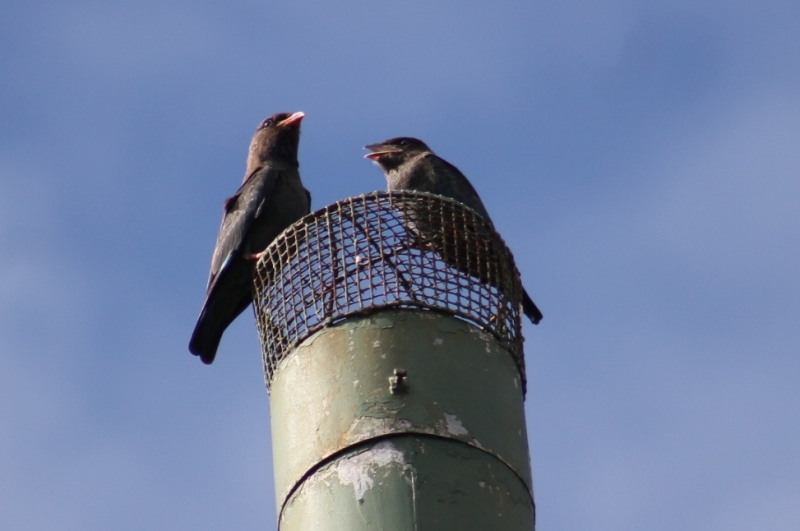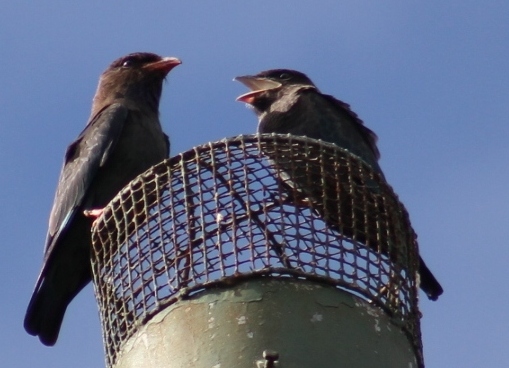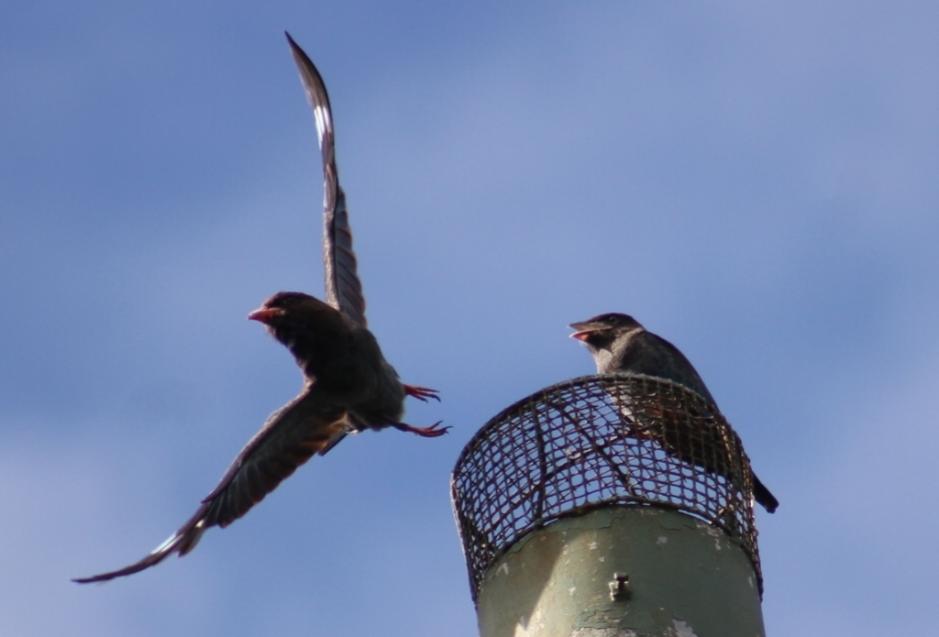Summer Babies 2022: Channel-Billed Cuckoo Pair Being Fed By Currawong
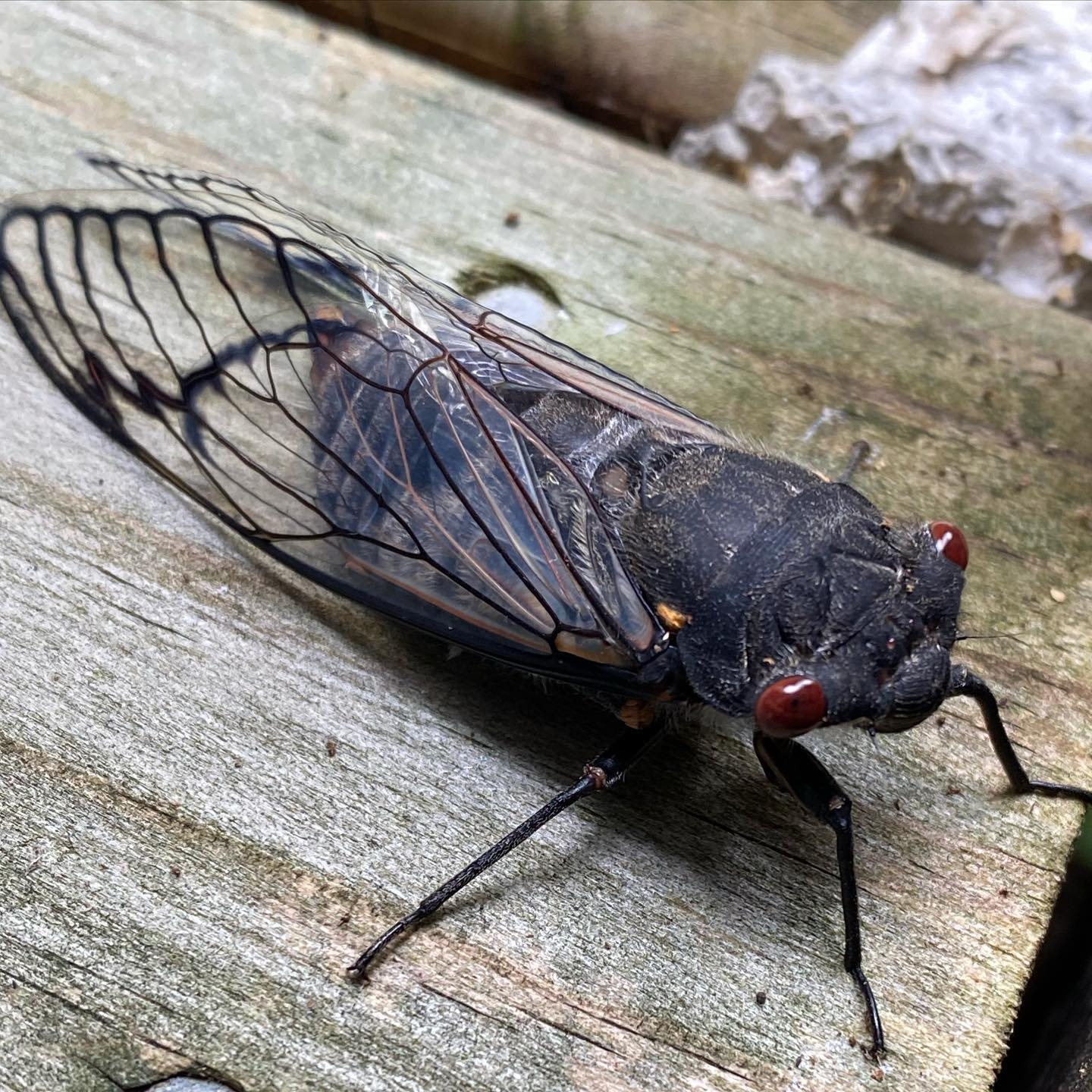
Black Prince Cicada, Psaltoda plaga, - at Elanora, November 20, 2020 - photo by Selena Griffith
calling for food
feed me! Feeed me!
The Currawong sticks its head right in the cuckoos mouth to give it food
you can just see the cicada the currawong has caught
More! More! I need MORE food
the currawong takes off to catch more cicadas
caught one!
Feed me! Feed me!
down the hatch!
Dollarbird Babies
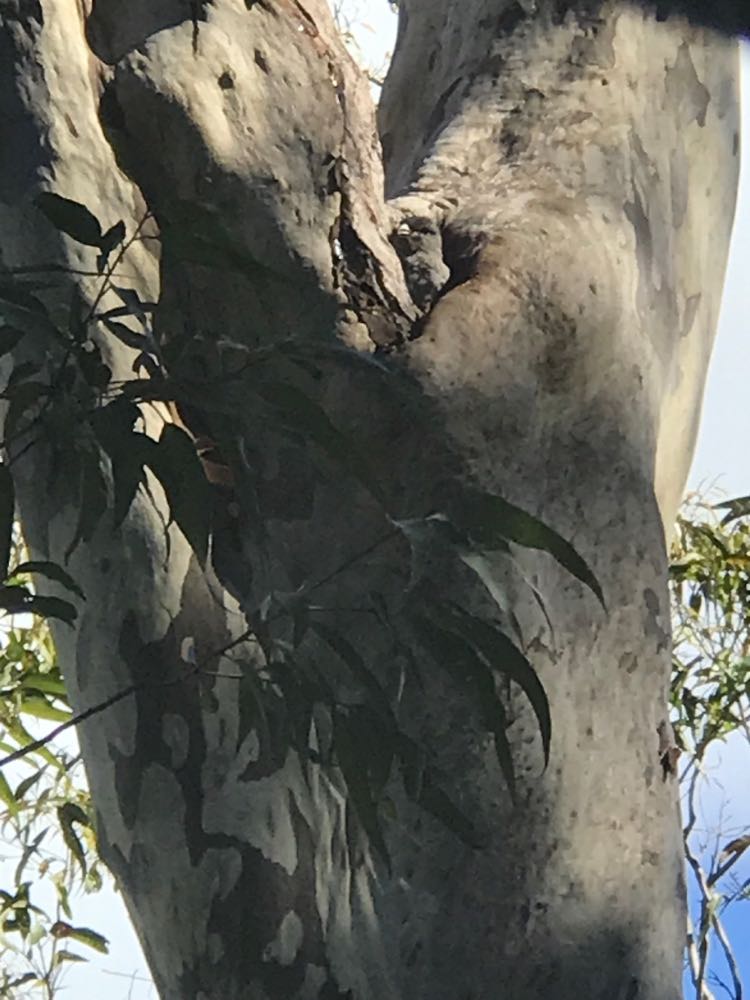
The Dollarbird arrives in northern and eastern Australia in September each year to breed. In March or April the birds return to New Guinea and adjacent islands to spend their winter. When in Australia they will inhabit open wooded areas, normally with mature, hollow-bearing trees suitable for nesting or alongside our creeks and waterways where their food, mainly flying insects, is also in abundance at this time of year. During their breeding season pairs of Dollarbirds are often seen flying in characteristic rolling flights. These flights are more common in the evening, and are accompanied by cackling calls. The white eggs are laid in an unlined tree hollow and are incubated by both adults. The young birds are also cared for by both parents. The same nesting site may be used for several years.
The Anula tribe of Northern Australia associate the dollar-bird with rain, and call it the rain-bird. A man who has the bird for his totem can make rain at a certain pool. He catches a snake, puts it alive into the pool, and after holding it under water for a time takes it out, kills it, and lays it down by the side of the creek. Then he makes an arched bundle of grass stalks in imitation of a rainbow, and sets it up over the snake. After that all he does is to sing over the snake and the mimic rainbow; sooner or later the rain will fall. They explain this procedure by saying that long ago the dollar-bird had as a mate at this spot a snake, who lived in the pool and used to make rain by spitting up into the sky till a rainbow and clouds appeared and rain fell. From Sir James George Frazer (1854–1941). The Golden Bough. 1922. Ch. 2. The Magical Control of Rain.
